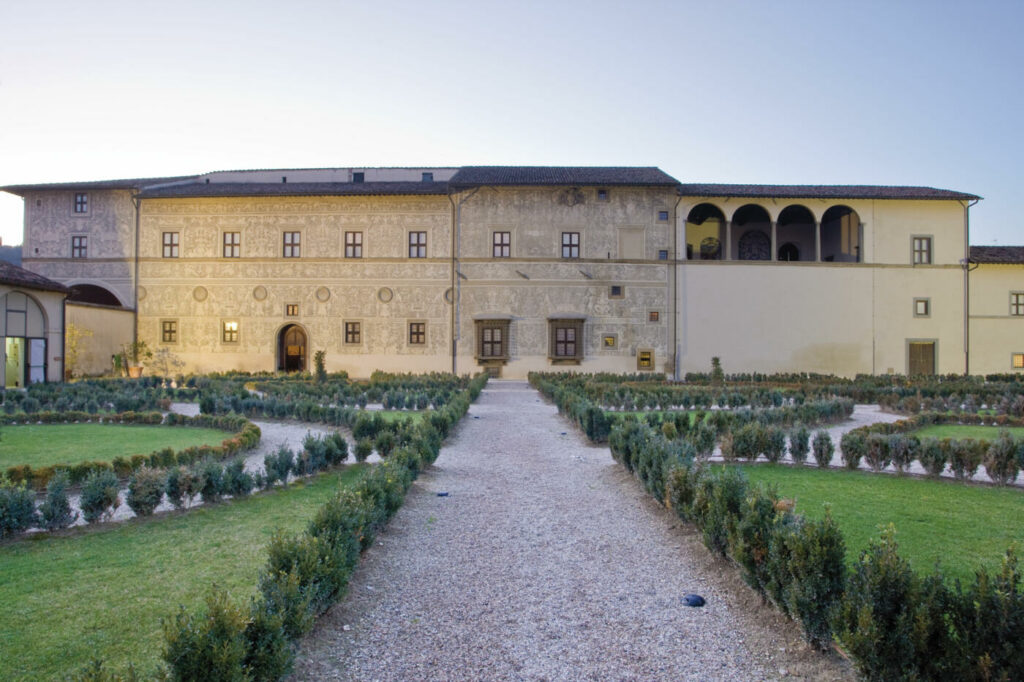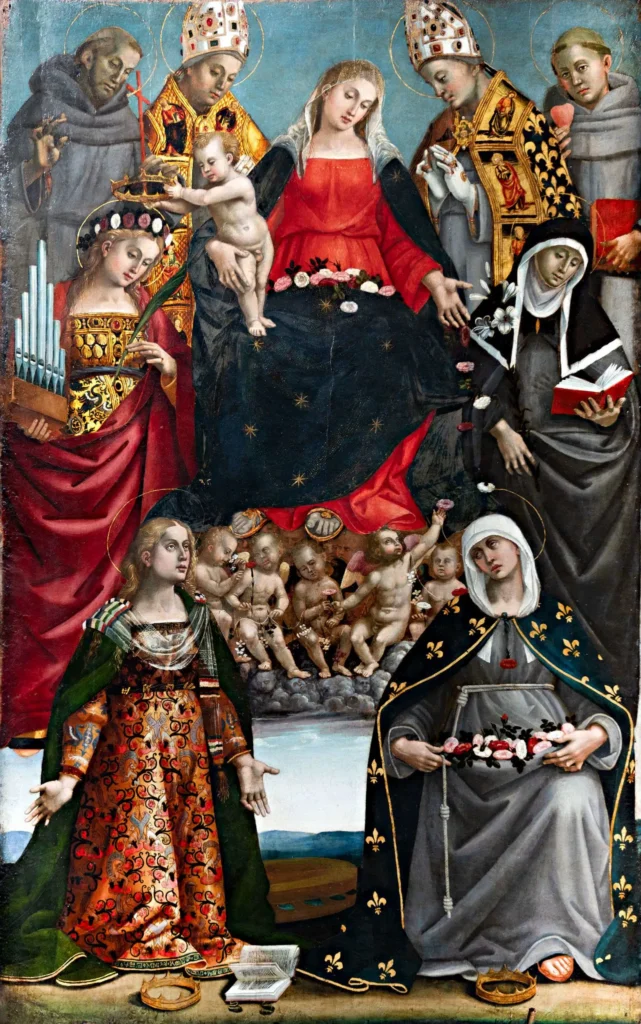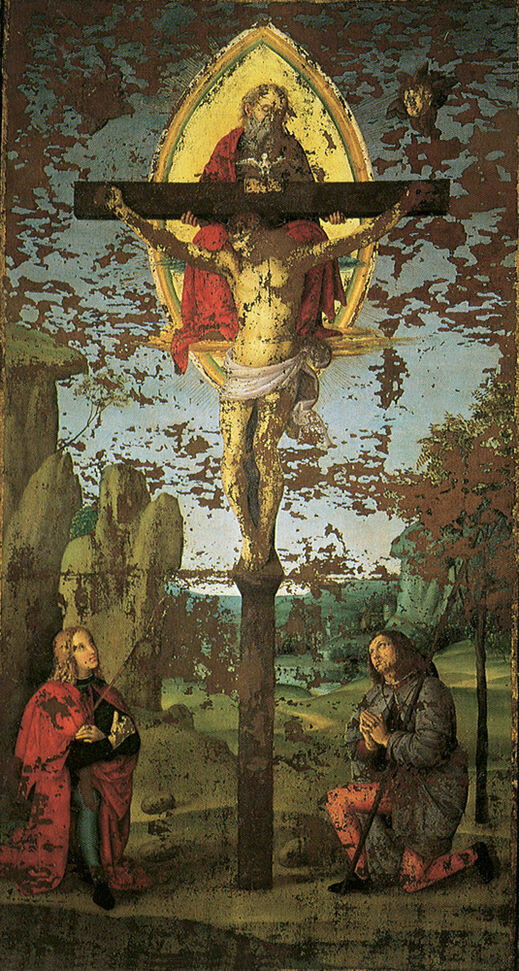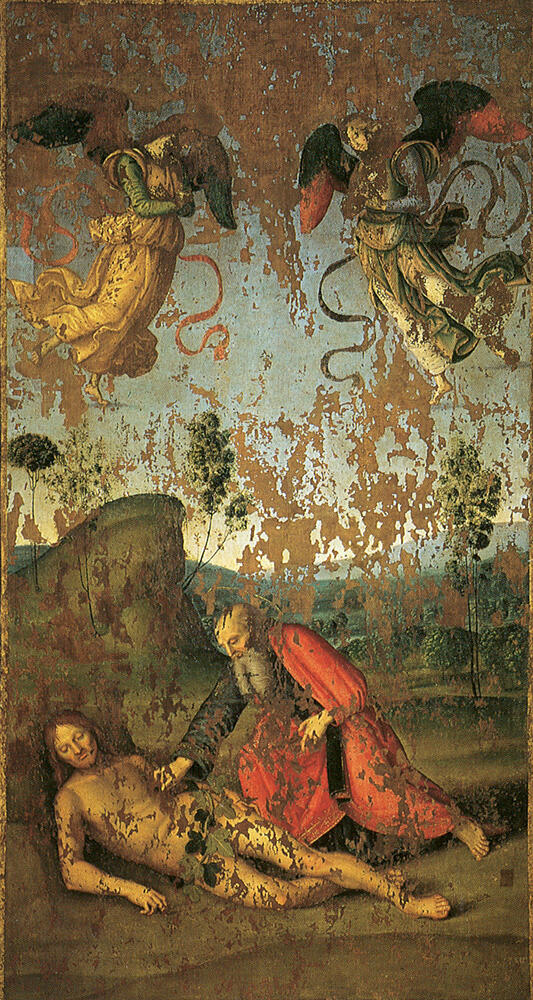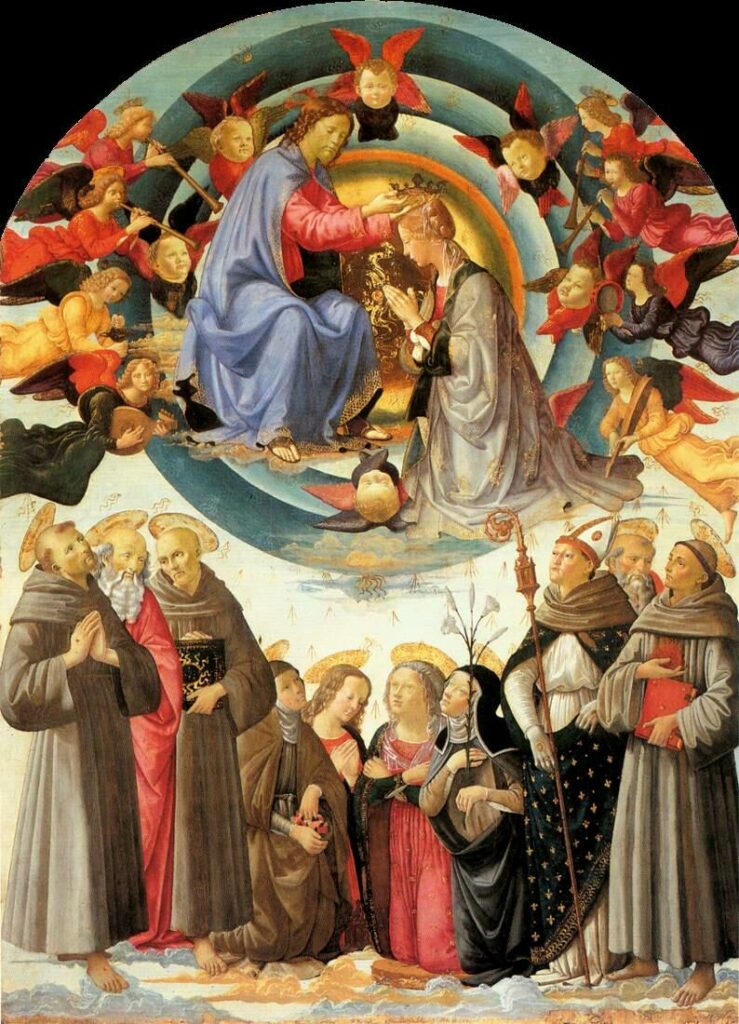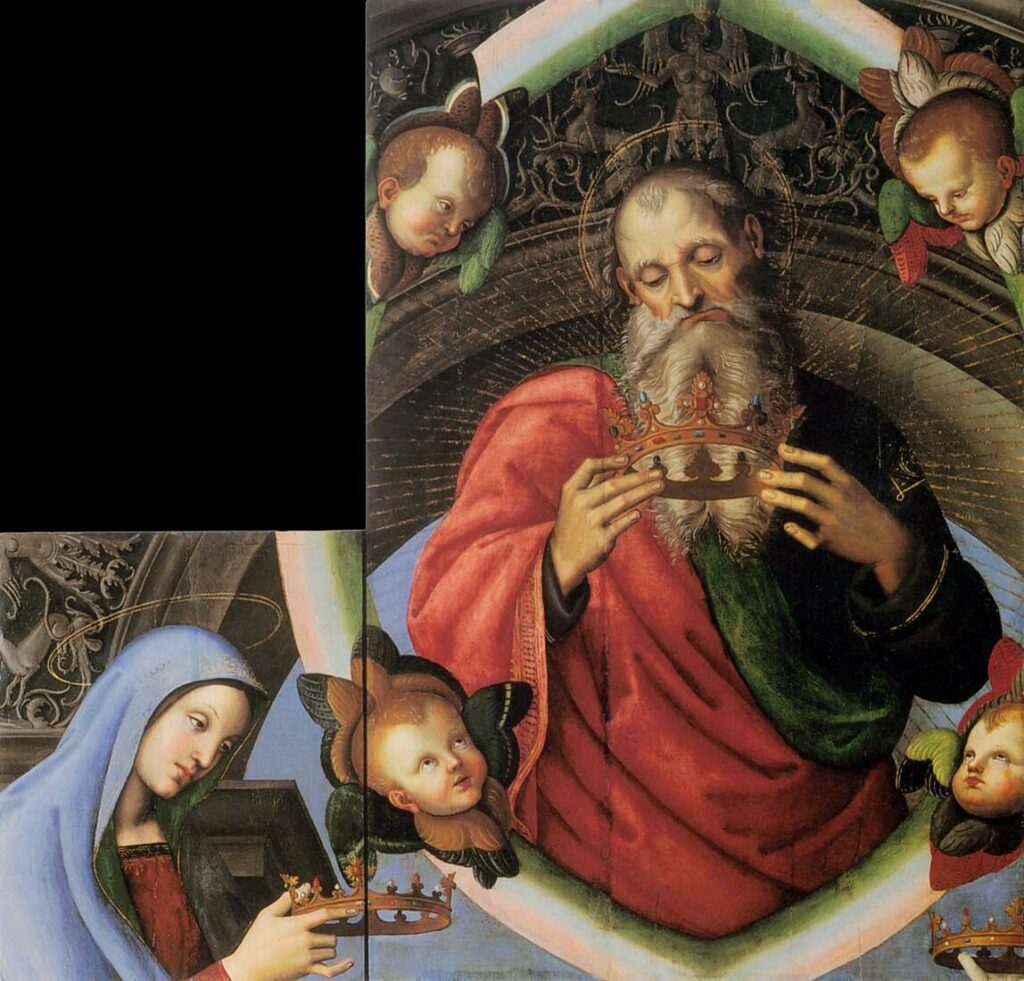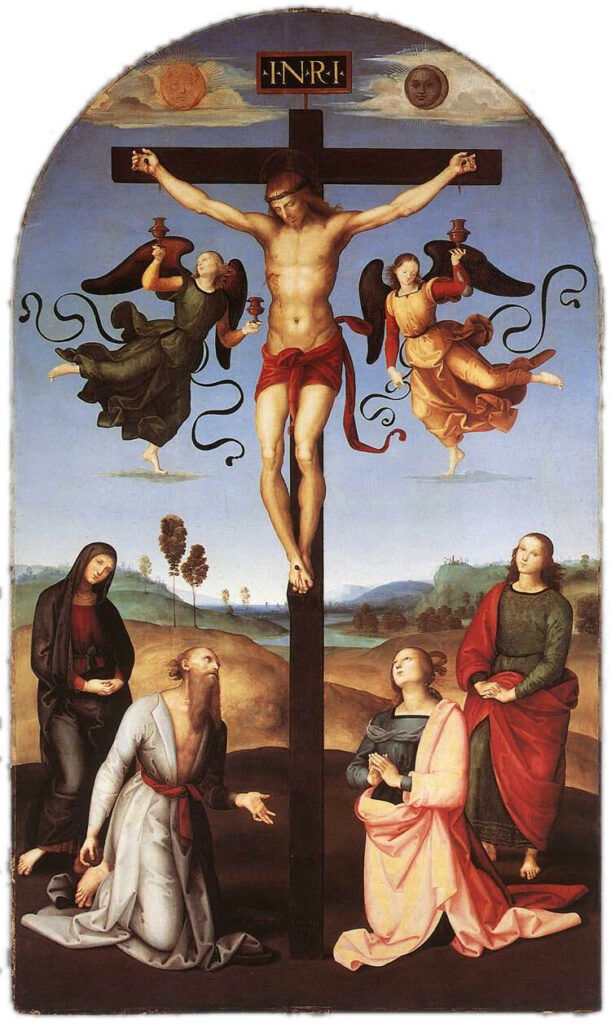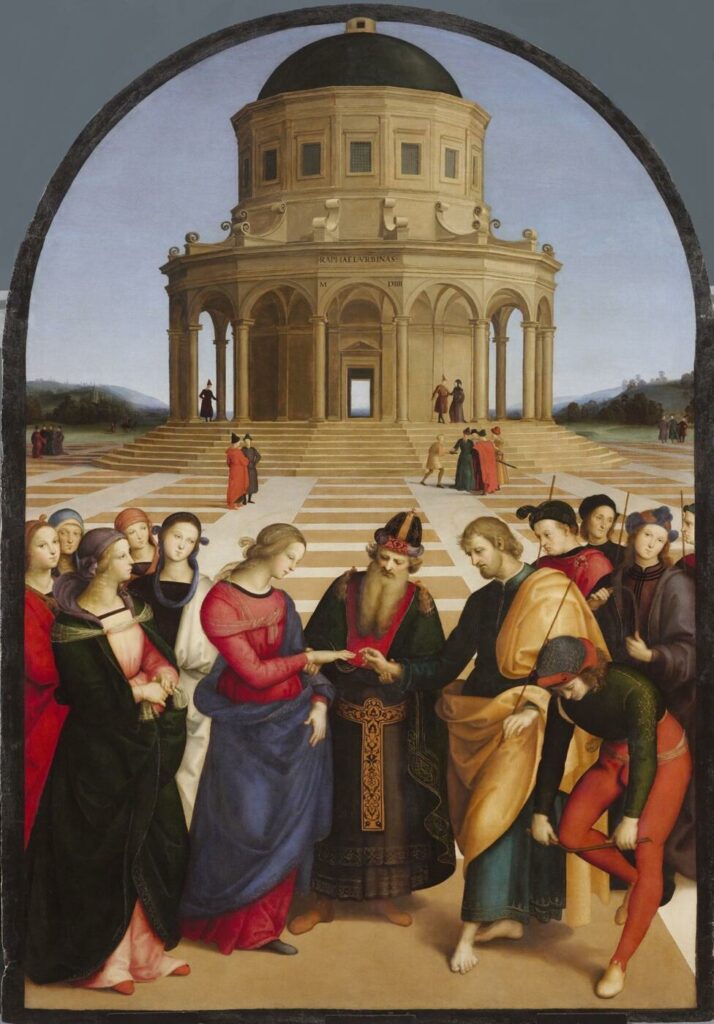Città di Castello
The art gallery
di Città di Castello
The municipal art gallery of Città di Castello
The splendid rooms of Palazzo Vitelli alla Cannoniera house the Municipal Art Gallery
The art gallery of Città di Castello is housed in the beautiful rooms of Palazzo Vitelli alla Cannoniera, which was built during the Renaissance by the Vitelli Family on the occasion of the wedding between Alessandro Vitelli and Paola Angela Rosso from the town of San Secondo Parmense.
Many famous renaissance artists contributed to the creation of the building including Cristoforo Gherardi.
The frescoed Picture Gallery contains works from the 1300’s to the 1900’s and has one of the largest collections in Umbria. In its 30 rooms hang pieces by some of Italy’s greatest masters including the “Standard of the Holy Trinity” by the young Raphael, the “Martyrdom of St. Sebastian” by Luca Signorelli and the “Coronation of the Virgin” by Domenico Ghirlandaio.
Of great interest is the collection of ceramics by the Della Robbia family and the reliquary of St. Andrea del Ghiberti.
The gallery also has contemporary works by such famous 20th-century artists as Carlo Carrà, Giorgio De Chirico and Renato Guttuso.
INFO:
- Phone: 075 8520656 – 075 8554202 – 335460050
- from 1° apr al 31 oct: 10.00 -13.00 / 14.30 -18.30
- Dal 1° nov al 31 mar: 10.00 -13.00 / 15.00 – 18.00
- close: monday
Tickets
Entrance ticket to the Città di Castello art gallery:
- Full price €8.00
- Reduced €6.00
- Family ticket A: €21.00
(two adults and a child aged 6 to 14) - Family ticket B: €26.00
(two adults and two children aged 6 to 14) - Family ticket C: €20.00
(two adults and three children aged 6 to 14) - Free ticket
(Visitors under 6 years of age)
The Altarpiece of Santa Cecilia (1498) by Luca Signorelli: A Rediscovered Treasure for Città di Castello
The recent and triumphant return of Luca Signorelli’s Altarpiece of Santa Cecilia to its original home, the Pinacoteca Comunale of Città di Castello, represents an event of extraordinary historical and artistic importance. This work, created in 1498, the same year as the famous “Martyrdom of Saint Sebastian”, further strengthens the deep bond between Signorelli and the upper Tiber city, shedding light on a crucial period of his production.
A Long and Troubled History
The Altarpiece of Santa Cecilia was originally commissioned by the Confraternity of Santa Cecilia for the church of San Giacomo in Città di Castello. For centuries, the work adorned the altar of the church, testifying to the devotion of the faithful and the mastery of the artist. However, historical vicissitudes and Napoleonic suppressions led to its removal.
In the 19th century, the altarpiece was purchased by the famous art dealer Edward Solly and, after several changes of ownership, ended up in the prestigious collection of the Kimbell Art Museum in Fort Worth, Texas (USA). For over a century, this seminal work from Signorelli’s maturity has been admired overseas, depriving Città di Castello of a piece of its artistic identity.
The recent agreement that allowed the altarpiece to be returned to Italy, on long-term loan, is the result of years of negotiations and underscores the importance of returning works to their original historical and cultural context, where they can be fully understood and appreciated.
Description of the Work
The Santa Cecilia Altarpiece is a magnificent example of Renaissance religious painting, characterized by the typical monumentality and psychological depth of Signorelli’s figures. The painting depicts:
- Saint Cecilia in the center: The saint is placed in a prominent position, with her iconographic attribute, the portative organ, at her feet or in her hands. Her expression is serene and contemplative, often turned upwards or towards the viewer with intense spirituality. Signorelli excels in giving his figures an almost sculptural dignity, and Saint Cecilia is no exception, wrapped in rich draperies that enhance her body volume.
- Saints around: Around the central figure of Saint Cecilia, Signorelli arranges a group of saints, often identifiable by their iconographic attributes. These saints “converse” with each other or with the Virgin (if present), creating a “Holy Conversation” typical of Renaissance painting. Their arrangement is not static, but studied to create a visual balance and a silent narration. Each figure is characterized individually, with attention to physiognomy and expressiveness. Among the saints most frequently associated with this iconography, or who may have been included in the original altarpiece of Città di Castello, there are often Saint Valerian (her husband), Saint Tiburtius, or other patron saints of the confraternity or linked to the history of the church.
- The Architectural or Landscape Setting: The background of the work may vary. Signorelli often favored settings that combined classical architectural elements, sometimes in ruins to symbolize the overcoming of paganism, with large and evocative landscapes. These backgrounds are not simple fillings, but contribute to the spatial depth and general atmosphere of the painting. The light models the figures and the environments, giving realism and drama.
Style and Meaning
The Altarpiece of Santa Cecilia testifies to the full artistic maturity of Luca Signorelli. The distinctive characteristics of his style can be recognized in it:
- Strong plasticity and anatomy: The bodies are rendered with a solid volumetry and a deep knowledge of anatomy, borrowed from artists such as Piero della Francesca.
- Expressiveness of the faces: The expressions of the figures are intense and convey a sense of profound spirituality and emotional participation.
- Balanced composition: Despite the presence of multiple figures, the composition is always harmonious and balanced, guiding the viewer’s eye.
- Realistic and symbolic details: From the folds of the drapes to the attributes of the saints, every detail is taken care of, often with symbolic values that enrich the meaning of the work.
The return of the Altarpiece of Santa Cecilia to Città di Castello is not only the recovery of an artistic masterpiece, but also the recomposition of a piece of the historical and cultural memory of the community. It is a unique opportunity for visitors to admire the work in its original context, fully understanding its value and the deep bond between Signorelli and the territory that hosted and celebrated him. A bridge between past and present, between the banks of the Tiber and the art galleries overseas, testifying to the eternal charm of art.
The Martyrdom of Saint Sebastian (1498) by Luca Signorelli: Anatomy of a Sacrifice
The 1498 “Martyrdom of Saint Sebastian”, by the Renaissance master Luca Signorelli, is a painting that immediately captures the attention for its expressive power and the drama of the scene. Currently on display at the Pinacoteca Comunale in Città di Castello, this work represents a significant moment in the artist’s production and in the context of Umbrian and Tuscan art of the late fifteenth century.
Historical Context and Commission
Made in a period of great artistic and cultural ferment, the painting was commissioned by the Confraternity of Saint Sebastian of Città di Castello for their oratory, as evidenced by an inscription on the base of the temple depicted in the work. Saint Sebastian, a Christian martyr of the third century, was venerated as a protector from plagues, a particularly important figure in an era in which epidemics were a constant threat. The request for a work depicting him was therefore not only an act of devotion, but also a hope of protection for the community.
Signorelli, originally from Cortona, had already consolidated his fame, distinguishing himself for his ability to depict the human figure with a muscular and dynamic anatomy, influenced by artists such as Piero della Francesca and in some ways anticipating Michelangelo.
Description of the Work
The painting, an imposing panel, presents Saint Sebastian tied to a column of a ruined classical temple, pierced by numerous arrows. The scene is set in a landscape that opens onto a vast and serene horizon, almost as if to contrast the violence of the martyrdom in the foreground.
- Saint Sebastian: Sebastian’s body is the fulcrum of the composition. Signorelli paints him with extraordinary anatomical mastery: the muscles are tense, the posture is studied to highlight the suffering but also the dignity of the martyr. Despite the pain, the expression on his face is one of resignation and firmness, projected upwards, almost as if to indicate the acceptance of his fate and his unshakeable faith. The arrows, although numerous, do not appear as instruments of brutal death, but rather as symbols of his sacrifice.
- The Executioners: At the feet of the saint, the two archers are depicted with concentrated faces and intent on their task. Their poses, although dynamic, do not convey cruelty, but rather a cold execution of orders. Their clothes and their physiognomies reflect Signorelli’s attention to detail and his ability to characterize the figures.
- The Classical Setting: Saint Sebastian is tied to a broken column of a ruined classical temple. This choice is not accidental: the ruins symbolize the fall of paganism and the triumph of the new Christian faith. The architectural details, although fragmentary, show a deep knowledge of classical art, typical of the Renaissance.
- The Background: The landscape in the background is wide and detailed, with hills, trees and a sky that fades from intense blue to lighter tones. This element, although secondary to the main scene, adds depth and breadth to the work, balancing the tension of the martyrdom with the quiet of nature. On the right you can see the fortified city of Città di Castello, a clear reference to the place for which the work was created.
Style and Influences
The “Martyrdom of Saint Sebastian” fully reveals Signorelli’s style, characterized by:
- Plasticity of the Bodies: A strong attention to the volumetric and muscular rendering of the bodies, which makes them almost sculptural.
- Restrained Drama: Despite the violent theme, the scene is not excessively brutal. The drama is entrusted more to the pose and expression of the saint than to macabre details.
- Use of Light: The light models the figures and helps create a sense of depth and realism.
- Renaissance Influences: The work shows the influence of Piero della Francesca in the solidity of the figures and in the perspective, combined with an anticipation of that expressive power that will later be fully developed by Michelangelo.
The Legacy of the Painting
Luca Signorelli’s “Martyrdom of Saint Sebastian” is a work of great artistic and historical value. Not only does it bear witness to the devotion of the time and the technical skill of a Renaissance master, but it also offers a profound reflection on the theme of sacrifice, faith and human dignity in the face of pain. Admiring it today in Città di Castello means connecting directly with the cultural richness of an era and with the greatness of an artist who has left an indelible mark on the history of art.
RAFFAELLO SANZIO
In addition to the “Standard of the Holy Trinity”, the first documented work by Raphael in Città di Castello was an altarpiece depicting the “Coronation of St. Nicholas of Tolentino” for the Church of St. Augustine in 1500 CE. Unfortunately, the canvas was badly damaged during an earthquake in 1789.
In 1503, he painted the “Mond Crucifixion” for the Church of St. Dominic, now in the National Gallery in London.
In 1504, he painted the famous “Wedding of the Virgin” for the Albizzini Chapel in the Church of St. Francis, which has been in the Brera Gallery in Milan since 1806.
The Marriage of the Virgin (1504) by Raphael Sanzio: Harmony and Beauty of the Renaissance
“The Marriage of the Virgin” by Raffaello Sanzio, dated 1504, is one of the most famous and significant works of the young master from Urbino, a turning point in his career and a sublime example of the grace and harmony that would characterize his mature style. Currently preserved at the Pinacoteca di Brera in Milan, the painting represents one of the milestones of the Italian High Renaissance.
Historical Context and Commission
The work was commissioned by the Albizzini family for the Chapel of San Giuseppe in the church of San Francesco in Città di Castello, the same city that today hosts some of Luca Signorelli’s works. This testifies to the cultural vivacity and artistic importance of Città di Castello at the beginning of the 16th century, capable of attracting emerging talents such as the very young Raphael.
At just 21 years old, Raphael was already a promising artist, trained in the workshop of Perugino, whose influence is still evident in this work, but which Raphael surpasses and reinterprets with a sensitivity and harmony that is entirely personal. The date of 1504 is crucial, as it marks the beginning of Raphael’s Florentine period, where he would absorb the teachings of Leonardo and Michelangelo.
Description of the Work
The painting depicts the solemn moment of the wedding between the Virgin Mary and Saint Joseph, a very popular iconographic theme, which Raphael elevates to a new level of formal and emotional perfection.
- Composition and Perspective: The work is a triumph of perspective and symmetry. In the center, a priest joins the hands of Mary and Joseph. Behind them are two groups of figures: on the left, Mary’s companions and on the right, Mary’s rejected suitors.
- Mary and Joseph: Mary is painted with an ethereal grace and composed humility, her figure is slender and elegant. Joseph, portrayed with dignity and reverence, holds the flowering staff, symbol of his divine election. This detail is crucial: according to legend, among Mary’s various suitors, only Joseph’s staff miraculously blossomed, indicating divine will.
- The Rejected Suitors: On the right, a group of young suitors, whose staffs have remained dry, express disappointment. In particular, one of them is intent on breaking his dry staff with his knee, a gesture of frustration that adds a touch of human realism to the sacred scene. This detail, taken from Perugino but rendered with greater dynamism, underlines the miraculous aspect of Joseph’s choice.
- The Temple in the Background: The most innovative and majestic element of the work is the circular temple that dominates the background, placed on a staircase. This building, with its perfect geometry and classical proportions, is the perspective fulcrum of the painting. Its open doors reveal a blue sky, creating a sense of infinite depth and recalling divine harmony. The temple is not only an architectural element, but a symbol of the perfection and sacredness of the event. Its imaginary but credible construction demonstrates Raphael’s acute understanding of Renaissance architectural principles.
- Landscape and Harmony: The surrounding landscape is serene and orderly, with rolling hills and few natural elements, which contribute to creating an atmosphere of peace and harmony. The use of light is impeccable, illuminating the figures and architectural elements with a clarity that enhances their plasticity. The colors are bright and delicate, typical of Raphael’s palette.
Style and Influences
“The Marriage of the Virgin” is a key work to understand Raphael’s evolution:
- Perugina Legacy: The influence of his master, Perugino, is evident in the spatial composition, the grace of the figures and the typology of the faces. However, Raphael surpasses the model, infusing greater vitality and movement.
- Perspective and Space: Raphael demonstrates an exceptional mastery of linear perspective, creating a space that appears deep and perfectly measurable, leading the viewer’s gaze towards the temple in the distance.
- Raphaelesque “Grace”: The work is pervaded by that “grace” that would become Raphael’s signature: a sense of balance, harmony, ideal beauty and composure that pervades every figure and every element of the painting.
The Legacy of the Painting
Despite its current location in Milan, Raphael’s “The Marriage of the Virgin” remains deeply linked to the history of Città di Castello. The work is not only a masterpiece of the Italian Renaissance, but also a symbol of Raphael’s ability to innovate and surpass his masters, laying the foundation for his extraordinary career and for the art of the centuries to come. Admiring this painting means immersing oneself in the ideal beauty and harmony of the Renaissance at its height.
